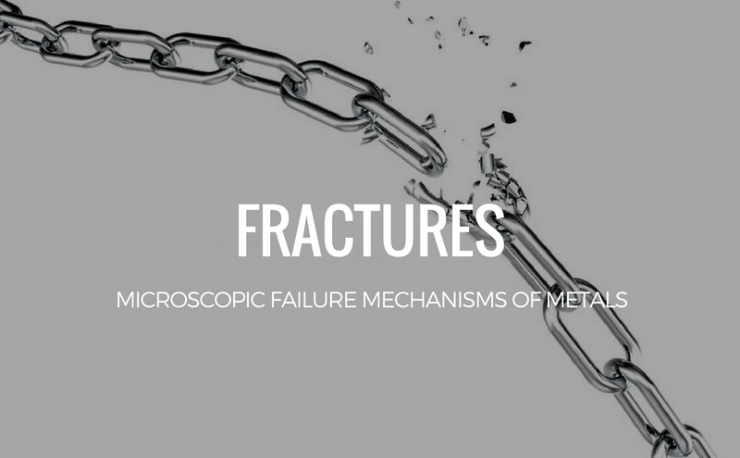
Today we talk about the microscopic failure mechanism of metals. Specifically, we focus on the fractures and consequently on the crack propagation.
What is a fracture? And how it takes place?
A fracture is the separation of an object or material into two or more pieces under the action of stress. But specifically how a frature take place? The latter occurs as a result of the crack propagation, a crack of variable length and geometry.
What influences the fractures?
- pores
- inclusions of fragile particles
- micro-cracks
- manufacturing defects of the material (surface finished)
Looking at the crack propagation.
As the fracture mechanics (is the field of mechanics concerned with the study of the propagation of cracks in materials) explains, there are some primary factors that influence the crack propagation. What are these factors?
- material fracture toughness (amount of energy absorbed by the material at its moment of rupture
- e.g. the crack propagation in brittle materials requires less energy than duttile ones that they are subjected to plastic deformation before failure.
- rate of solicitation (if the solicitation is impulsive, a ductile material under load imposed gradually can give brittle fracture).
What are the microscopic failure mechanisms of metals?
So, microscopic failure mechanisms of materials (in this case, of metals) can be “ductile” or “brittle“. The movement of dislocations generate these types of breakage.
Here are some examples.
BRITTLE FRACTURES
In most cases, when loading is discontinued, brittle fracture will continue even. In brittle crystalline materials, fracture can occur by cleavage as the result of tensile stress acting normal to crystallographic planes with low bonding (cleavage planes).
The basic sequence in a typical brittle fracture is
- the introduction of a flaw either before or after the material is put in service
- slow and stable crack propagation under recurring loading
- sudden rapid failure when the crack reaches critical crack length based on the conditions defined by fracture mechanics
D/E. fracture mechanics.
DUCTILE FRACTURES
In ductile fracture, extensive plastic deformation takes place before fracture.
This type of fracture involves:
- many metals with Hexagonal Close-Packed
- some metals with Body-Centered Cubic (e.g. if iron, molybdenum, tungsten are stressed quickly at low T)
In this case, the propagation of two types of cracks:
- intragranular corrosion (if the set boundaries is subject to corrosion)
- intergranular corrosion (if the set boundaries becomes brittle for segregation)
Here the process:
- In the maximum effort area with locked dislocations at the obstacles will form a small plastic deformation (e.g. grain boundaries)
- The shear stress generated by blocked dislocations form micro-cracks
- The elastic energy stored during the process allows spreading of micro-cracks.
Visit our website and discover all stainless steel fasteners. Sign in on our webshop and you can see real-time prices and discount.
Click hereRead more post here.




